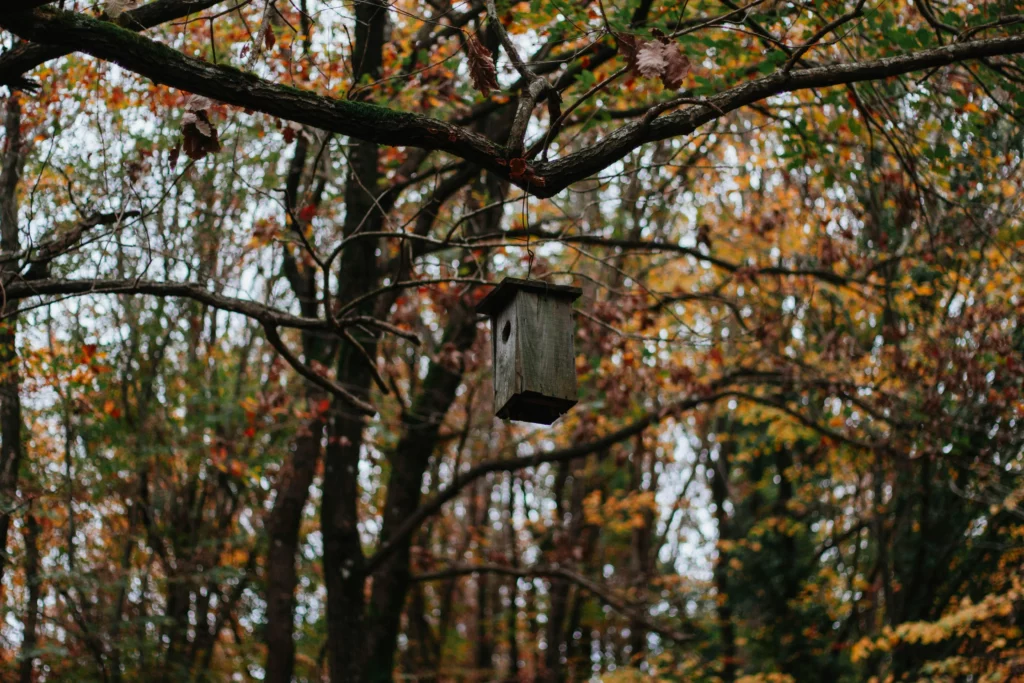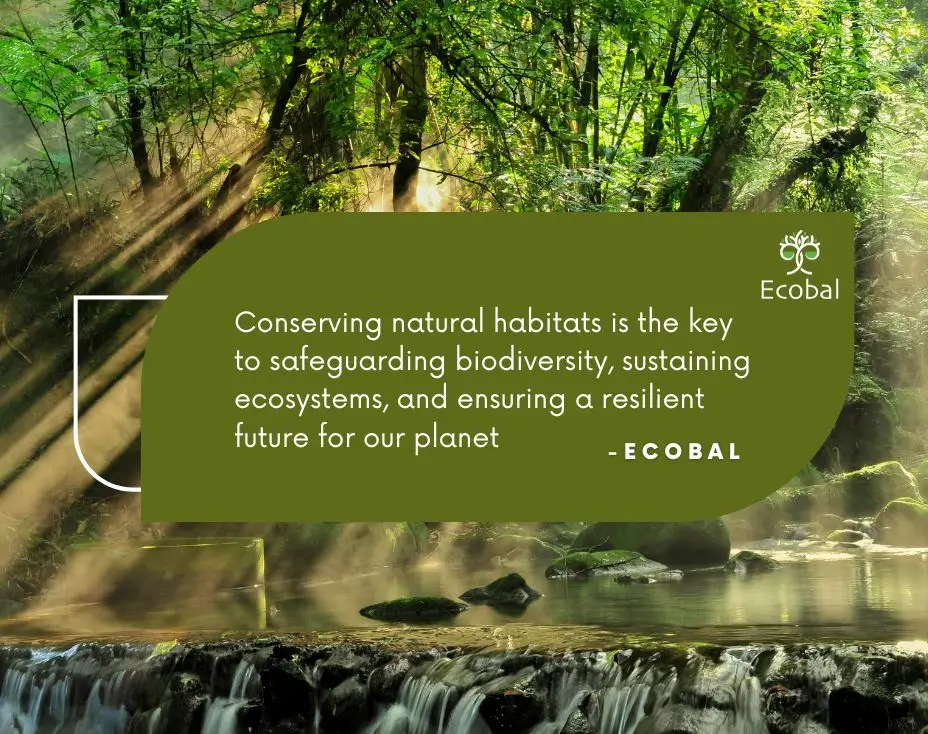Conservation is Key: The Significance of Safeguarding Natural Habitats and Maintaining Biodiversity
Natural habitats are the cornerstone of life on Earth, providing refuge for countless species and supporting ecosystem services critical to human survival. Biodiversity—the variety of life forms within an ecosystem—plays an indispensable role in maintaining ecological balance and resilience against environmental variability. This diversity facilitates key ecological processes such as nutrient cycling, pollination, and pest regulation, while offering resources essential for human life, including food, medicines, and clean water.
However, anthropogenic activities such as deforestation, industrialization and climate change pose significant threats to these habitats and the biodiversity associated with them. The degradation of natural habitats can lead to a decline in species diversity and disrupt ecological functions, resulting in a reduction in ecosystem services that are critical to human well-being. For example, biodiversity loss can impair the ability of ecosystems to adapt to changing conditions, thereby increasing their vulnerability to environmental stressors.
This article examines the critical importance of conserving natural habitats, highlights the myriad benefits of biodiversity conservation, and discusses the potential consequences of inaction. By understanding the intricate relationships between biodiversity and ecosystem health, we can better appreciate the need to implement effective conservation strategies to safeguard these invaluable resources for future generations.

The Importance of Natural Habitats
Natural habitats, encompassing rainforests, wetlands, grasslands, and coral reefs, are vital for maintaining the ecological processes that support life on Earth. These ecosystems regulate climate patterns, prevent soil erosion, and sequester carbon, thereby mitigating global warming.
Examples of Ecosystem Benefits:
- Amazon Rainforest: Known as the “lungs of the planet,” it absorbs approximately 1.7 billion metric tons of carbon dioxide annually through photosynthesis and contributes significantly to global climate regulation.
- Wetlands: These act as natural water purifiers, filtering pollutants and excess nutrients, maintaining water quality, and supporting biodiversity.
- Coral Reefs: Not only do they provide habitats for numerous marine species, but they also act as natural barriers, protecting coastlines from storm surges and erosion.
Destruction of these vital habitats disrupts their critical functions, leading to severe environmental consequences, such as increased greenhouse gas emissions, biodiversity loss, and heightened vulnerability to climate change. For example, the degradation of wetlands reduces their water filtration capacity and increases the risk of flooding. Similarly, the loss of pollinators like bees, essential for flowering plant reproduction, disrupts food webs and threatens global food security.
Research demonstrates that ecosystems with higher biodiversity are more resilient to environmental disturbances. Conserving natural habitats is not only essential for ecological integrity but also ensures the continued provision of vital ecosystem services that support human well-being. Without intact ecosystems, the complex interdependencies between species and their environments begin to unravel, causing cascading negative impacts on biodiversity and human societies.
Biodiversity: The Keystone of Ecosystem Health
Biodiversity plays a critical role in increasing ecosystem productivity and resilience, enabling diverse ecosystems to better adapt to environmental stressors such as drought, disease and climate change. Research shows that ecosystems with higher species richness are more stable and productive, especially under stress.
Key Contributions of Biodiversity:
- Forest Ecosystems: Diverse tree species improve recovery from disturbances such as wildfires and storms. Mixed-species forests recover more effectively due to complementary interactions among species, which improve resource use efficiency and resilience.
- Medicinal Value: A significant proportion of modern medicines are derived from natural compounds found in plants, fungi and marine organisms. For example, approximately 25% of modern pharmaceuticals are derived from natural sources, underscoring the importance of biodiversity in drug discovery and development.
- Cultural and Economic Value: Indigenous communities around the world rely on biodiversity for their livelihoods, food security and traditional practices. These communities’ knowledge systems often incorporate sustainable management practices that conserve ecosystem health and biodiversity. In addition, ecotourism has emerged as a growing industry that capitalizes on well-preserved natural habitats and diverse wildlife.
Biodiversity supports ecosystem services that underpin human resilience and well-being. Protecting and enhancing biodiversity ensures the sustainability of these services, promoting stability in the face of global environmental change.
Threats to Habitats and Biodiversity
Despite their critical importance, natural habitats and biodiversity face unprecedented threats due to human activities.
Major Threats:
- Deforestation: Driven by agricultural expansion and urban development, it fragments habitats, disrupts ecosystems, and renders them unable to sustain native species. IPBES (2019) reports that habitat loss is the leading cause of biodiversity decline, with nearly one million species at risk of extinction within a few decades.
- Pollution: Industrial waste, plastics, and agricultural runoff degrade habitats, creating toxic environments. For example, nutrient runoff causes eutrophication, leading to dead zones in aquatic systems where life cannot survive.
- Overexploitation: Unsustainable practices such as overfishing and illegal wildlife trade push many species to extinction. WWF (2022) highlights that vertebrate populations have declined by 69% since 1970 due to these practices.
- Climate Change: Rising temperatures and altered rainfall patterns force species to migrate or face extinction. For example, coral bleaching caused by warming oceans and acidification has devastated reef ecosystems worldwide.
IPBES stresses that climate change not only threatens biodiversity, but also undermines the resilience of ecosystems that provide essential services such as food security and clean water.
It estimates that nearly one million species are at risk of extinction within a few decades, a crisis that would have a profound impact on global ecosystems and human societies. The loss of biodiversity threatens not only ecological stability, but also the socio-economic systems that depend on these natural resources. Urgent action is needed to mitigate these threats through conservation efforts, sustainable resource management, and policies to reduce greenhouse gas emissions and pollution.
The Path Forward: Conservation Strategies
Addressing biodiversity loss and habitat degradation requires global action that integrates scientific knowledge and practical strategies.
Effective Conservation Strategies:
- Protected Areas: National parks and wildlife sanctuaries provide safe havens for species and ecosystems. According to the Intergovernmental Science-Policy Platform on Biodiversity and Ecosystem Services (IPBES), effective management of these areas is essential; they must be expanded to cover at least 30% of terrestrial and marine ecosystems by 2030, as outlined in the Kunming-Montreal Global Biodiversity Framework.
- Restoration Efforts: Reforestation and wetland restoration reverse ecological damage and enhance ecosystem services. For example, reforestation can sequester up to 1.1 billion tons of carbon annually, while wetlands filter pollutants and provide critical habitats for many species.
- Sustainable Land Use: Practices such as agroforestry and organic farming minimize environmental impacts while maintaining productivity. Research shows that agroforestry systems enhance biodiversity by providing habitat for diverse species, improving soil health and increasing resilience to climate change. For example, integrating trees into agricultural landscapes has been shown to increase crop yields by improving microclimates and reducing soil erosion.
- Policy and International Agreements: Policies to reduce carbon emissions, combat pollution, and regulate resource use are also essential components of a comprehensive strategy to protect biodiversity. The Paris Agreement and the Convention on Biological Diversity (CBD) promote global collaboration to reduce emissions and conserve biodiversity.
The success of these initiatives relies heavily on government commitment, business engagement, and individual action. Adequate funding, community participation, and public awareness campaigns are crucial to fostering a culture of conservation. By prioritizing these strategies, we can work toward a sustainable future that protects biodiversity and enhances ecosystem resilience in the face of ongoing environmental challenges.
Why It Matters for Ecobal
At Ecobal, we are committed to staying at the forefront of technological advancements in CO2 sequestration. By integrating cutting-edge technologies such as ultra-fast CO2 hydrate formation, we enhance our efforts to transform former agricultural or barren lands into thriving ecosystems. Ecobal has achieved significant milestones, including: Nature Spots in five different EU countries: France, Italy, Poland, Spain and Romania. Ecobal’s storage capacity: Ecobal manages 155 hectares of Nature Spots across the EU, storing 1581 tons of CO2, releasing about 1150 tons of oxygen per year, and conserving nature. This ensures that our projects not only effectively sequester CO2, but also contribute to sustainable biodiversity conservation.
Ecobal’s Mission
- Raise awareness and establish authority to certify the ecological health and capacity of rural and natural landscapes.
- Monetize ecosystem services to demonstrate the economic value of nature.
- Use natural ecosystems as efficient carbon sinks for CH4 and CO2 sequestration and biodiversity conservation.
- Turn CO2 and CH4 from challenges into valuable, tradable commodities.
- Manage soil microbiota and fauna to improve soil health and ecosystem functionality.
- Restore biodiversity through the reintroduction and conservation of native species.
The conservation of natural habitats and biodiversity is fundamental to ensuring a sustainable future. These ecosystems provide critical services that support life on Earth, from climate regulation to food security. By prioritizing conservation strategies, humanity can preserve the intricate balance of life that sustains us all. At Ecobal, we remain committed to creating resilient ecosystems that protect biodiversity, enhance sustainability, and restore the beauty of our natural world.
About the Author
This article is written by Dr. Amisalu Milkias, Ecobal’s CO₂ Project Specialist. Dr. Milkias is a restoration ecology expert, advancing collaborative approaches to carbon sequestration and biodiversity conservation to combat climate change.


